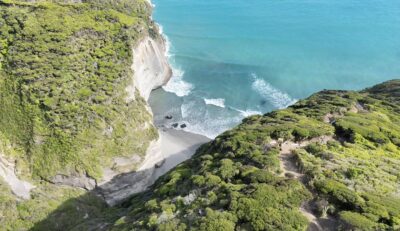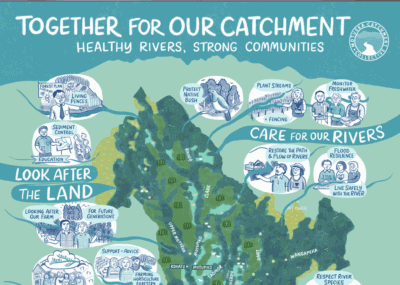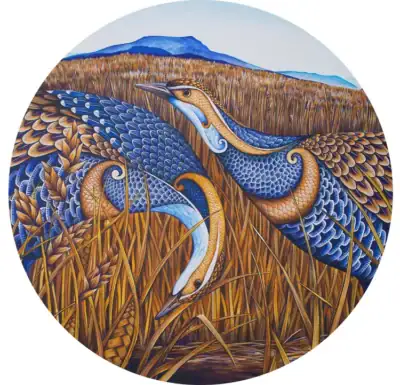We often think of predator control in terms of what it can do for our native birdlife – but two members of Friends of East Mohua, Saskia Wood and Frans de Jong, live in the Pohara Valley and have made some fascinating observations in their garden that show the benefits go much further. Here’s their story of how it has not only supported native plants and birds, but also allowed invertebrate life thrive and a hidden world of life to re-emerge;

We live in Golden Bay, close to the shore, now for nearly thirty years. Our garden contains patches of Miocene limestone rock and a regrowth of native shrubs and trees. When we came the whole area was infested with weed species and rubbish and very little leaf litter, large orange centipedes (Lithobius forficatus), brown garden snails (Cornu aspersum), and tiger slugs (Limax maximus) crawling around. All being introduced species from overseas!
After cleaning this up we started to support regeneration of the remaining native trees and shrubs and most importantly quickly building up a leaf litter base. More seeds, some good, some bad arrived with help of birds also.
With active pest control we try to keep the garden free from predators like mice, rats, hedgehogs, possums and stoats. To do this takes time, but these measures have had a positive effect on the population of native snails, that are gradually returning in the regrowth. We have now found six native snail species in our garden, they are only known under their scientific names, because they are often overlooked. We keep a close eye for new ones.
Not only do the native snails return, we find hunting spiders, nasty looking funnel web spiders in the rock crevices, harvestmen, hoppers, flatworms, glow worms, moths, millipedes, mites and lots of wetas, wherever there is dry shelter. Look carefully because many invertebrates are cleverly and beautifully camouflaged.
We have set up a routine of wandering out into the garden under various conditions to see what is happening and noticed that after rain, warm moist nights and calm weather are good for observing. We use a strong headlight if out at night, good glasses or a magnifying glass, because most of the species are well under a quarter of an inch in size. Don’t forget your camera because there is a lot to see, and it doesn’t wait for staged photo shoots.
The website iNaturalist NZ is very good for identifying the living things you will find in your locality.
The photo’s above show the native snails they have found living in their garden:
- Cavellia buccinella
- Charopa coma
- Flammulina crebiflammea
- Lamellidea novoseelandica
- Phrixgnatus celia
- Flammulina perdita




